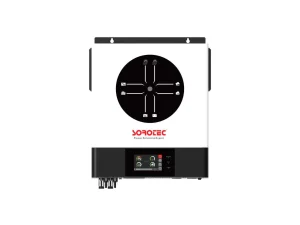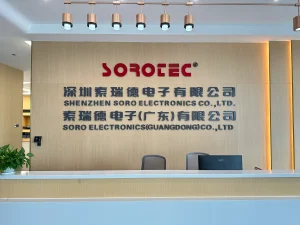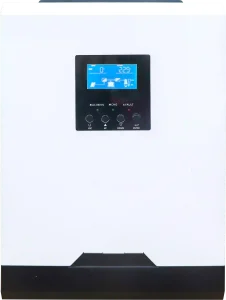Building a super cool solar power system means matching solar panels with inverters just right to make things work great and stay safe. This guide looks at the basics of how they fit together, like voltage and current needs for 20kV inverters, ways to wire panels, and stuff like weather that matters. Check out how SOROTEC’s big-power solutions—with 1000V DC input and 98% efficiency—can make large projects awesome. Plus, get handy tips for getting the most energy and keeping your system running a long time with smart planning and checking.

What Are the Basics of Solar Panel and Inverter Compatibility?
Key Factors in Matching Solar Panels with Inverters
When setting up a solar power system, making sure panels and inverters work together is super important. The inverter turns the direct current (DC) from panels into alternating current (AC) that runs most gadgets. To work best, the panels’ voltage and current need to match the inverter’s input range. This stops waste or harm to the system’s parts.
New inverters, like ones with a max PV input current of 27A, fit with panels that have higher Imp (max power current). This makes them ready for newer, stronger panels that give more energy.
The Role of Voltage, Current, and Power Ratings in System Design
Voltage, current, and power are big deals when pairing panels with an inverter. The open-circuit voltage (Voc) and max power point voltage (Vmp) of panels should fit inside the inverter’s voltage range. Also, the combined short-circuit current (Isc) and max power point current (Imp) from all panels can’t go over the inverter’s current limit.
For example, hybrid on-grid/off-grid inverters can handle up to 900V DC, giving lots of wiggle room for panel setups. Getting these right makes energy swapping super smooth and keeps the system lasting long.
How Many Solar Panels Are Required for a 20kV Inverter?
Determining the Total Power Output Needed
To figure out how many panels you need for a 20kV inverter, start with your energy needs. A 20kV inverter is for big jobs that use lots of power. If you need 20kW per hour when things are perfect, your panels must make at least that much to use the inverter’s full power.
Assessing the Voltage and Current Input Range of a 20kV Inverter
Next, check the voltage and current rules for your 20kV inverter. Big-power inverters might take 200–850V DC or even up to 1000V DC. Make sure the combined Imp from your panels doesn’t go over the inverter’s max PV input current.
Estimating the Number of Solar Panels Based on Their Specifications
The number of panels depends on how much power each one gives and their electric details. For example, if each panel makes 400W at its best:
Divide 20kW by 400W. That’s about 50 panels. Check their combined Voc doesn’t go too high in cold weather.
Good planning keeps things super safe and efficient.
Why Choose SOROTEC Products for a 20kV Inverter System?
SOROTEC is a top name in neat energy solutions. Their products include awesome inverters for homes and big factories. These have cool features like built-in MPPT tech for grabbing the most energy and app access to global cloud platforms for live tracking.
Key Specifications of SOROTEC’s 20kV Inverters
SOROTEC’s big-power inverters handle inputs up to 1000V DC and give super high efficiency, close to 98%. They’ve got tough safety stuff like AC overcurrent protection and anti-dust kits for rough places.
Efficiency and Performance Metrics of SOROTEC Products
Efficiency is a big deal for big systems. With up to 98% performance, these inverters lose hardly any energy when swapping it. This high efficiency means lower bills over time.
Designing an Optimal Solar Panel Configuration for a 20kV Inverter
Understanding how to wire your solar panels correctly is just as important as choosing quality components – let’s examine the key differences between series and parallel connections and how they impact your system’s performance with a 20kV inverter.
Series vs. Parallel Connections: Pros and Cons
Voltage Matching Through Series Connections
When setting up panels, series connections are great for getting the right voltage for a 20kV inverter. In series, panel voltages add up, but the current stays the same. This works well for big inverters with input ranges up to 1000V DC. Hybrid on-grid/off-grid inverters often take up to 900V DC, so you’ve got lots of options.
But watch out for cold weather. It can make the open-circuit voltage (Voc) go up and might push past the inverter’s limit. Keep the combined Voc safe for all conditions to avoid trouble.
Current Optimization Through Parallel Connections
Parallel connections boost current without changing voltage. Here, each panel’s current adds up, but voltages stay the same. This is awesome for systems needing more current to match the inverter’s specs.
Inverters with a max PV input current of 27A work great with panels that have higher Imp. This keeps energy moving smooth and fits new panel tech.
Ensuring Compatibility with SOROTEC’s 20kV Inverter Models
Picking a matching inverter is key for a system that works great and lasts. SOROTEC’s big-power models are built for strong energy outputs with neat stuff like MPPT tech and safety features. They fit lots of setups, making them perfect for big solar projects.
Additional Considerations for Installing a 20kV Solar System
Accounting for Environmental Factors: Sunlight, Temperature, and Shading
Weather stuff really affects how your solar system works. Sunlight decides how much energy you make, so check your site well. Set panels at the best angle and direction to catch the most sun all day.
Temperature changes mess with panel efficiency and voltage, too. Hot weather can lower energy making, while cold can push Voc too high. Shadows from trees or buildings can also cut down power by making panels uneven.
The Importance of Battery Storage Options in High-Power Systems
Batteries are super important for keeping power steady and using energy best in big systems. Fancy batteries with balancing features last longer and work great during busy times or when sun’s low.
Energy storage that works with new inverters often has ports (RS485/CAN) for hooking up to battery systems, making things run smooth and easy to watch.
.webp)
Integrating Monitoring Solutions with SOROTEC’s Technology
Live tracking makes managing your system way easier by showing how it’s doing. Global cloud platforms you can check on your phone let you see energy made and used from anywhere.
SOROTEC gives you easy-to-use screens that make tracking simple. They also support cool stuff like power internet apps and planned load control.
Recommendations for Efficient System Setup Using SOROTEC Products
Selecting the Ideal Combination of Panels and Inverters from SOROTEC
Picking the best panels and inverters makes your system rock. For a 20kV setup:
Use high-power panels with Imp that fits new trends. Pair them with an inverter that takes big inputs (up to 1000V DC) and has super efficiency (up to 98%).
These setups boost energy swapping and cut costs over time.
Tips for Maximizing Energy Efficiency and Longevity
To keep your system super efficient for years:
Clean panels and check wires often. Place panels to avoid shadows. Use batteries that work with your inverter for smart load control. Check tracking tools to spot problems fast.
Using these tricks with trusty SOROTEC products gives you a green, efficient solar system that fits your needs.
FAQs
Q1: How do series connections help a 20kV inverter system?
Series connections bump up voltage without changing current, perfect for hitting the high-voltage needs of big systems.
Q2: Why is checking the site important before setting up panels?
Stuff like sunlight, temperature swings, and shadows changes how much energy you make and how well the system works.
Q3: What should I look for in battery storage?
Look for long-lasting batteries with balancing, BMS/EMS hookup, and enough power for busy times or low sun.








